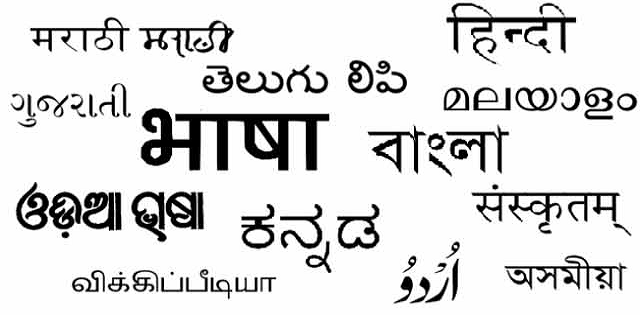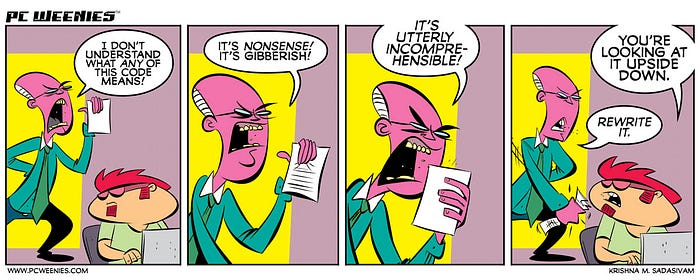
I often talk to founders about building for the diverse Indian audience. Over a myriad discussions I’ve realized that the cold-start challenges remain the same. In the interest of building my own mental framework for what it takes to build for a multi-lingual audience, I set out on a quest to learn some of the best practices and to avoid common pitfalls. In this process I spoke to founders who have successfully built and scaled vernacular products in India, as well as with senior product folks at MNCs like Uber, Amazon, and so on. This post summarizes my observations.
One of the foremost insights I had through all these discussions was that one should think of building for Bharat the same way as one would think about building a product that scales to multiple countries. The minute I put this hat on, everything started to feel straightforward. Hopefully, you’ll see it. So here we go:
Where should you start?

This is an important question. India has many diverse languages, diverse regions, and each with its own peculiarities. If you are an early-stage company launching a new product, where should you start? Many will argue that you should go after the market where the userbase is large. So Hindi becomes a default choice for many. But Hindi is also crowded, so is it the right choice? Three broad frameworks emerged from my conversations:
> Choose the market most familiar to the founding team: I get the logic of this. You understand this audience. You are this audience. So getting to PMF should be easier
> Choose the largest market: Choose the audience with the largest user base. This is the ‘Hindi’ trap and the get to scale fast trap, but it probably would also work for several categories
> Choose the market where the chance of getting to PMF is highest: If you are building a literary platform, perhaps go after the market with the highest literacy or with the most affinity to their language. If you are building a gaming platform, perhaps go after the market where you are likely to find more gamers.
What was clear though, is that there is merit to investing the time in figuring out where you’d like to start. Where would early adopters be?
Pitfall: Avoid going after multiple markets at the same time. Get your playbook right in one language and try to get to a point where other than the marketing strategy, everything else can pretty much be replicated
Automation is over-rated:

There are obviously a number of tools out there that can help with translation. But what became apparent pretty quickly is that
a. No tool alone is sufficient especially for getting colloquial context right
b. No tool can guarantee scalability as the language base expands
To ensure the product scales to multiple languages, it is critical to get processes and people right. This is far more important than getting your tools right.
> Design/development philosophy should be platform first rather than feature first to ensure that the product scales as you add new languages — probably true for all products, multi-lingual or not
> Have a language owner. That’s right — you just need one person. This person reviews all marketing content, all product content, and all communication before it goes to your audience.
> Have a tight process in place for manual “language and context review” post-development (pre-QA), pre-release and pre-marketing to ensure that you are taking audience sentiment and local context into account
Pitfalls:
> You don’t need someone with a PhD in languages to be the language owner/language head. But generally, someone with a background in journalism for that language might do great!
> You may witness high attrition with ‘language owners’. Avoid this by hiring someone with a high degree of ownership and by giving them more responsibility. For instance, this person can also be responsible for planning Email campaigns or push notifications with local context — essentially, he becomes your gateway to your users. PS: If you find the right person, overpaying for this role may not be a bad idea!
Design matters more than language:

End goal for any product is to deliver an outstanding experience. And language is not necessarily always the answer. Gaming apps are a prime example of this. Logos, symbols and design simplicity can sometimes deliver the message very well. Video and audio content might often do a great job of enabling transactions compared to written content.
In addition, where you use local language might matter a lot more than ensuring language accuracy everywhere. An interesting concept that came up during my discussions was that of “Zero tolerance screens”. These are screens where it is absolutely critical that the user understands what is being said — payment screens, error screens, refund screens, etc are prime examples of this.
Similarly, users may want to communicate in their local language but may be ok using your product in English. This is especially relevant for transaction platforms or gaming platforms where logos and images do a great job of guiding a user through the product. However, dealing with customer support or chatting with other users in a language other than one’s mother tongue might be relatively difficult.
Pitfall: There is such a thing as too much localization. Indians have forever used common words like mall, shop, store instead of ‘dukaan’. The objective is to connect with your audience, to make sure they feel comfortable with the product. Avoid a purist approach to language support. Several English words are commonplace in most languages and it is ok (perhaps easier and more relatable for your user) to use them
Digital alone may not be sufficient

I was amused to hear how often offline and ATL stood out as an effective strategy to market to regional audiences. If yours is a category that requires behavior change, and people aren’t really going online looking for your app, marketing on traditional media (TV, newspapers, OOH) makes a lot of sense.
The way to reach users in different parts of the country may be different. Certain channels are more efficient than others depending on the region. For most of North India for example, cost per reach may be low due to the population density and the large Hindi speaking audience. In South India, different channels may make sense for different regions — In Andhra for example, cinema marketing is critical (COVID-19 notwithstanding). In Kerala, several households get 2 newspapers. SunTV is very popular in Tamil Nadu whereas digital might be sufficient for Bangalore.
Pitfall: Assuming that digital is sufficient to reach your audience PAN India and not trying other media for too long. Similarly, trying other media/ATL too soon before you have onboarded early adopters (say 15–20% of your target audience) leading to over-spending and poor use of marketing dollars. The general rule of thumb is that if you feel you have on-boarded early adopters and growth is plateauing, it may be time to onboard laggards where a region-specific brand strategy might work well.
Regional product management
How large your language team is and how deep your tracking and process for a language is, depends on how deep that market is for you. A great analogy I heard was that of ‘category management’ at Amazon. You need a Category Manager if the category is deep. If the category is small, you can club it along with other categories. Similarly, if a language market is deep and critical for your business, but you don’t have a team focused on it, it is unlikely that the users using that language will deliver.
This is where my original thought of executing as if you were building for multiple countries comes in. If one was building a product that was to expand to multiple countries, you would design in a way to reduce dependence on languages. You’d want the design to do the talking. You would have a dedicated team if a geography was very important for you. You would probably start by building for the country you understand most or for the country where you are likely to see rapid adoption.
In the end, designing for multiple languages in India is not too different from designing for multiple geographies/countries. This probably explains why more and more consumer startups are now expanding outside of India — it’s baked into the design…








